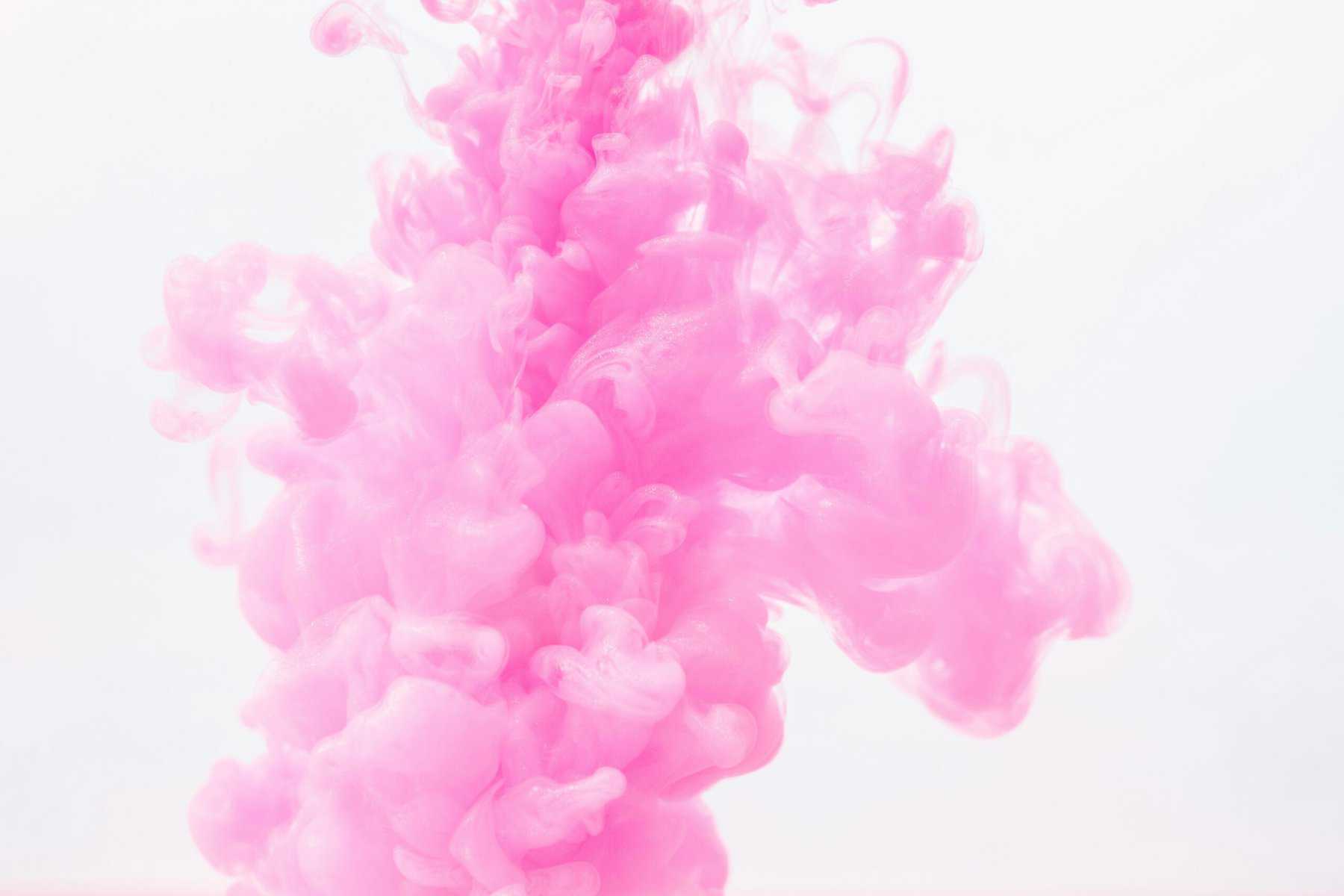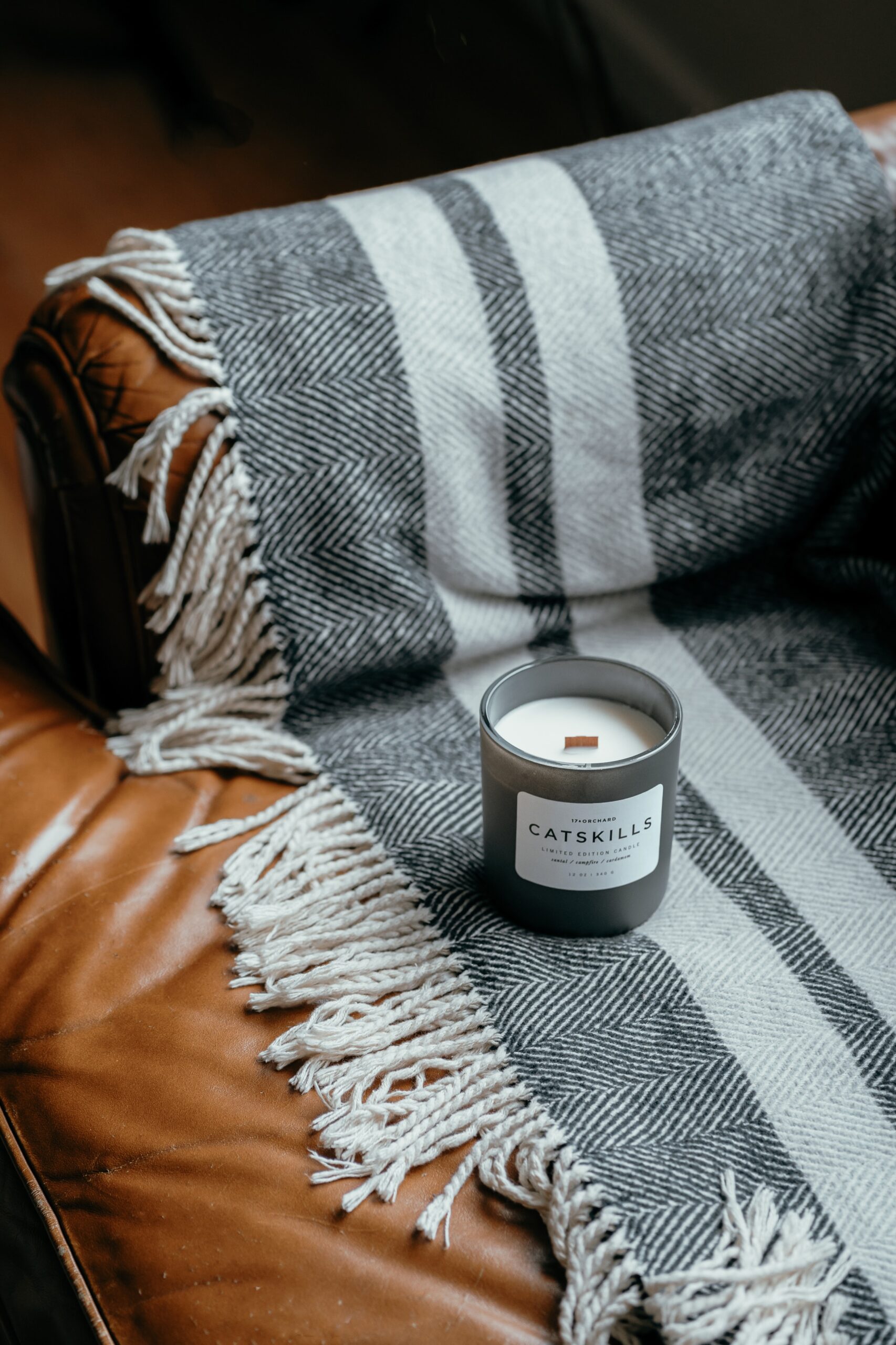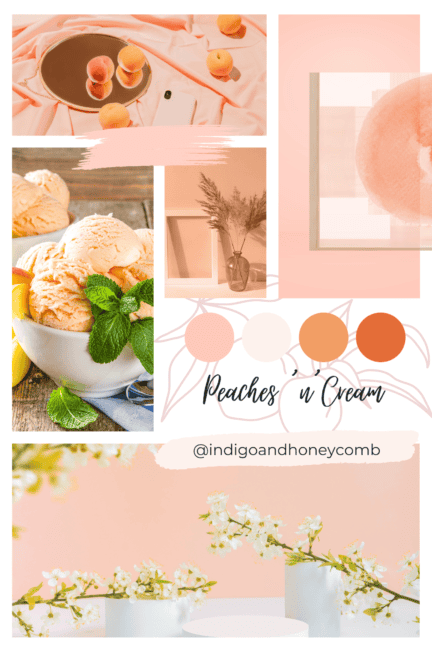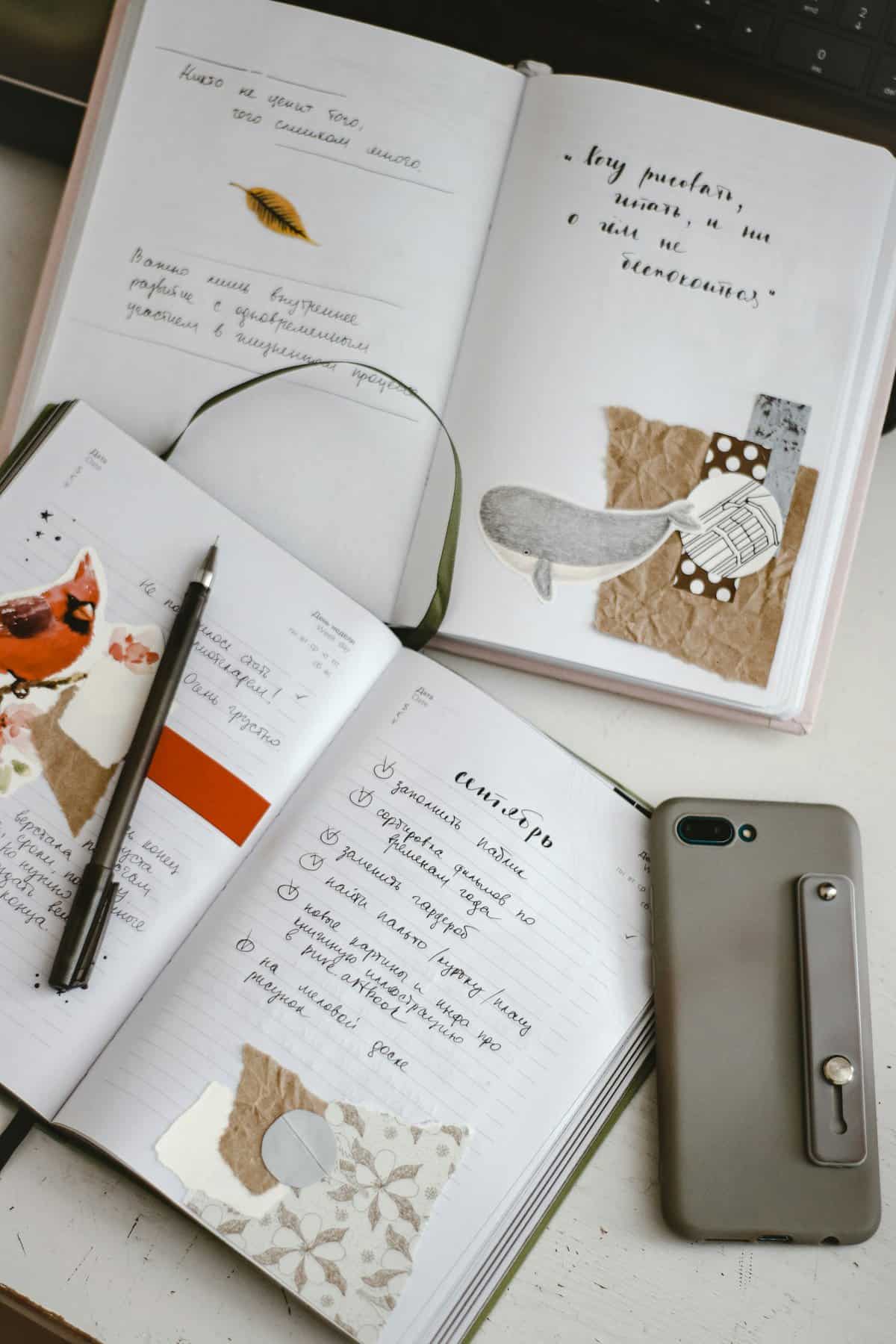Pink Color and Its Timeless Allure
In a world filled with colors, there’s one that stands out for its timeless allure and unwavering popularity – pink. From fashion runways to interior design, from art to branding, pink has been a constant presence, captivating hearts and minds for centuries.
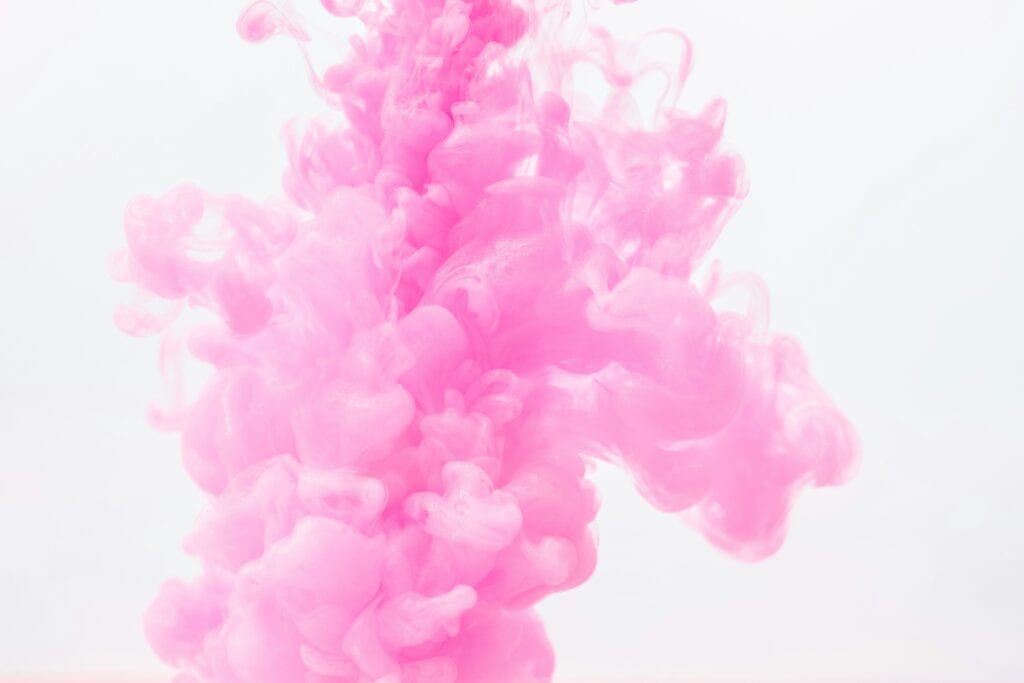
A Splash of History
Pink’s journey through history is as fascinating as it is colorful. Tracing back to the natural world, certain flowers and minerals produced pink pigments that ranged from pale blush to vibrant magenta.
Ancient cultures, such as the Egyptians, Greeks, and Romans, were among the first to experiment with these pigments, using them in art, cosmetics, and even architecture. However, pink as a distinct color wasn’t given much attention until much later.
Pink Color: 18th to 20th Centuries
In the 18th century, pink began to emerge as a fashionable color in Europe, particularly among the aristocracy. As a symbol of luxury and sophistication, pink often adorned the garments and interiors of the elite. Interestingly, during this time, pink was considered a color suitable for both men and women, with no gender connotations attached.
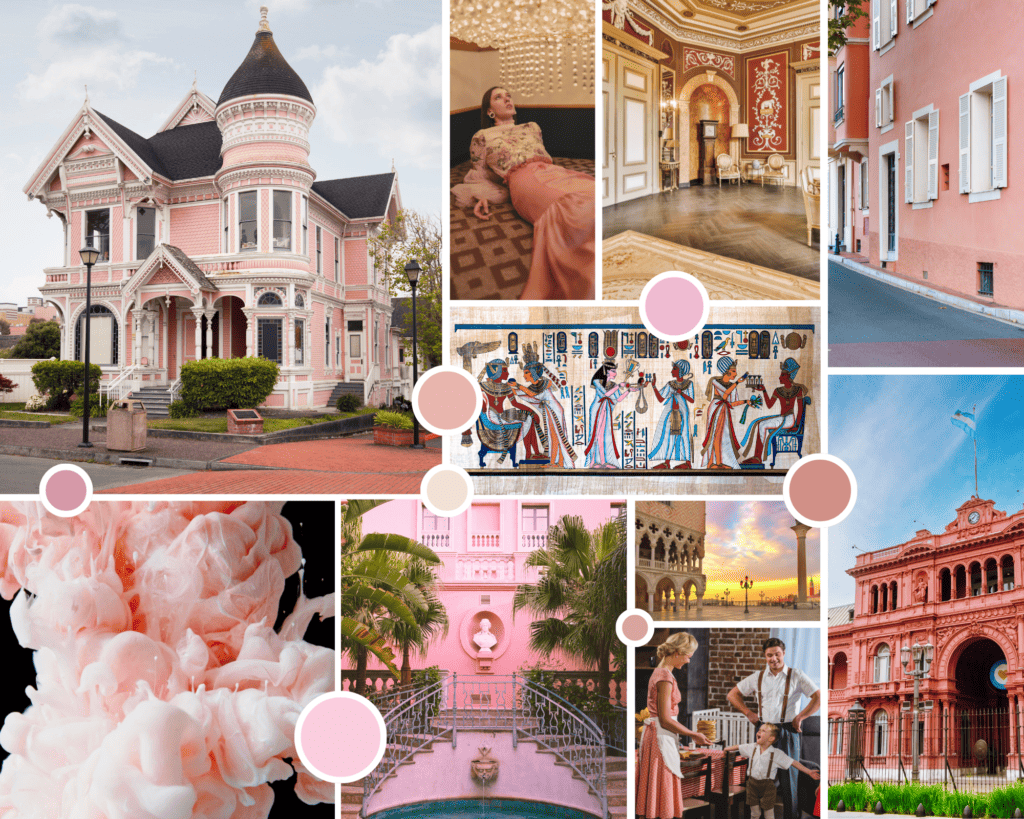
The 19th century witnessed a significant shift in the perception of pink. Concurrently, as industrialization brought about changes in social norms and gender roles, pastel shades, including pink, became associated with femininity and domesticity. Eventually, this shift reinforced the Victorian era’s emphasis on romanticism, sentimentality, and modesty. And these ideals were often represented through the use of soft, delicate hues.
By the early 20th century, pink had firmly established itself as the quintessential color of femininity. Consequently, it adorned baby clothes, nursery décor, and various consumer products marketed towards women. Further, this association with gender would persist for much of the century, shaping societal expectations and perceptions of the color.
Pink Color and Traditional Gender Norms
However, it’s important to note that pink’s association with femininity was not universally embraced. Throughout the 20th century, various feminist movements sought to challenge and subvert traditional gender norms. Subsequently, this led to debates surrounding the color’s symbolism and its implications for gender equality.
Despite these debates, pink continued to evolve and adapt, reflecting the changing tastes and attitudes of each era. From the bold, vibrant hues of the 1960s to the subtle, muted tones of the 21st century, pink has remained a constant presence in our cultural landscape. Indeed, pink has captivated hearts and minds with its enduring charm and versatility.
Trending in Pink
Through the decades, pink has experienced various trends and interpretations, constantly evolving to reflect the zeitgeist of each era.
- The Roaring Twenties: The Jazz Age brought forth a fascination with all things glamorous and extravagant. Pink, in its softer pastel shades, adorned flapper dresses, adding a touch of femininity to the era’s bold fashion statements.
- The Swinging Sixties: With the advent of pop culture and the counterculture movement, pink took on a more playful and rebellious tone. Think of Barbie’s iconic pink convertible or the psychedelic hues of Pink Floyd album covers.
- The Millennial Pink Phenomenon: In the early 21st century, a new shade of pink emerged, dubbed “millennial pink.” This muted, gender-neutral hue swept through fashion, design, and social media, captivating a generation with its understated chicness.
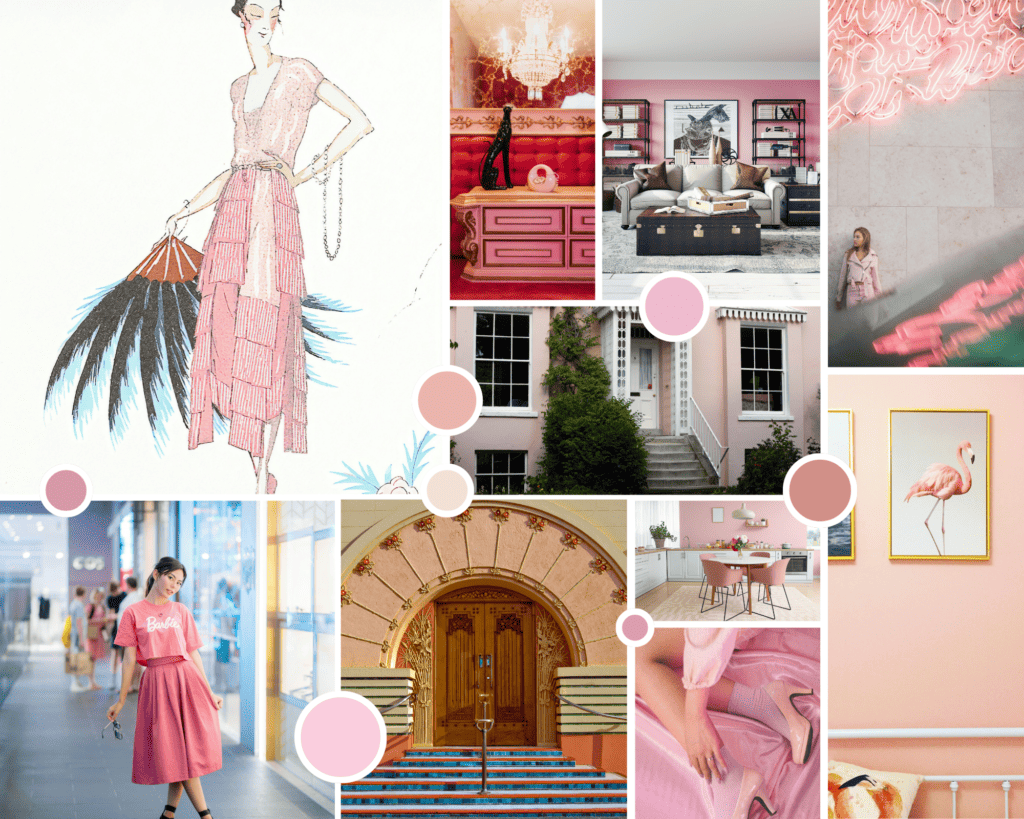
Pink’s Influence in Current Culture
In today’s cultural landscape, pink continues to hold a prominent place, shaping trends, influencing aesthetics, and challenging conventional norms. From social media to pop culture, pink’s presence is felt across various platforms and industries, reflecting its enduring appeal and relevance.
Social Media Aesthetics
Platforms like Instagram, TikTok, and Pinterest have played a significant role in amplifying pink’s influence in contemporary culture. Likewise, the rise of pastel aesthetics and the resurgence of vintage-inspired imagery have made pink a staple in the digital realm. From dreamy pink sunsets to whimsical pink-themed flat lays, social media influencers and content creators have embraced pink as a means of creating visually captivating and aspirational content.
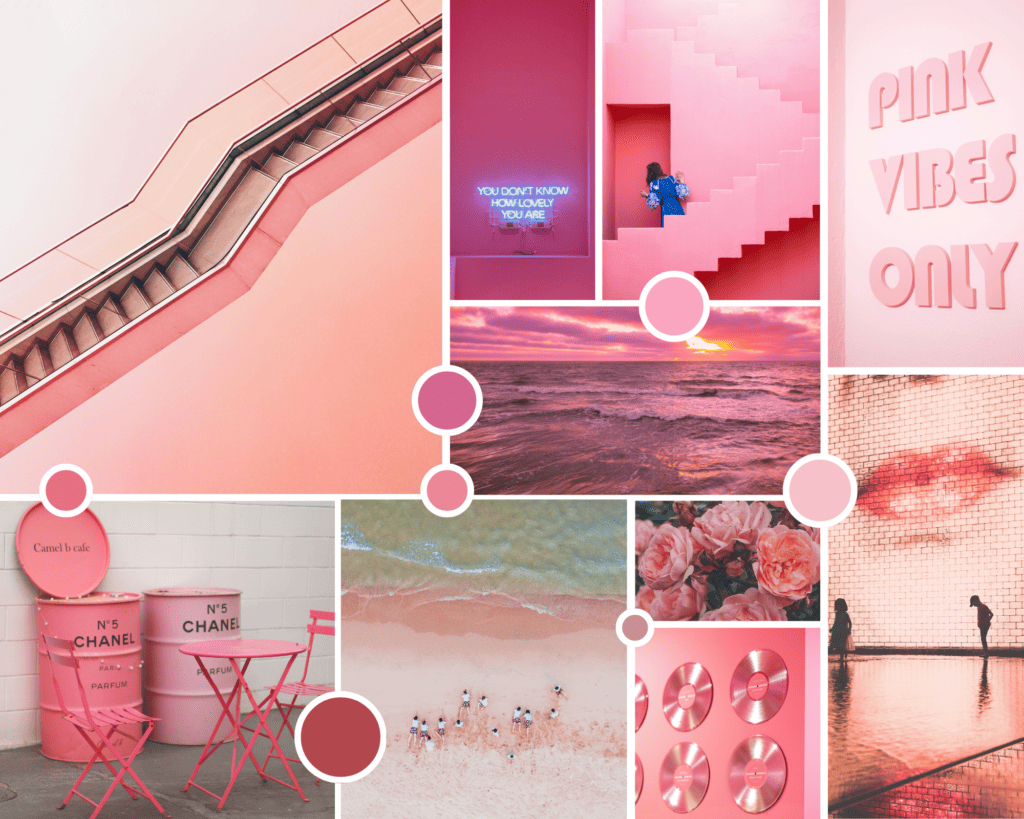
Fashion and Beauty Trends
In the world of fashion and beauty, pink continues to be a dominant force, inspiring trends and setting the tone for seasonal collections. From millennial pink streetwear to bold neon pink makeup looks, designers and beauty brands are constantly finding new ways to reinvent and reinterpret the color. Pink has also become synonymous with inclusivity and self-expression. Brands are embracing a diverse range of pink shades to cater to a wide range of skin tones and personal styles.
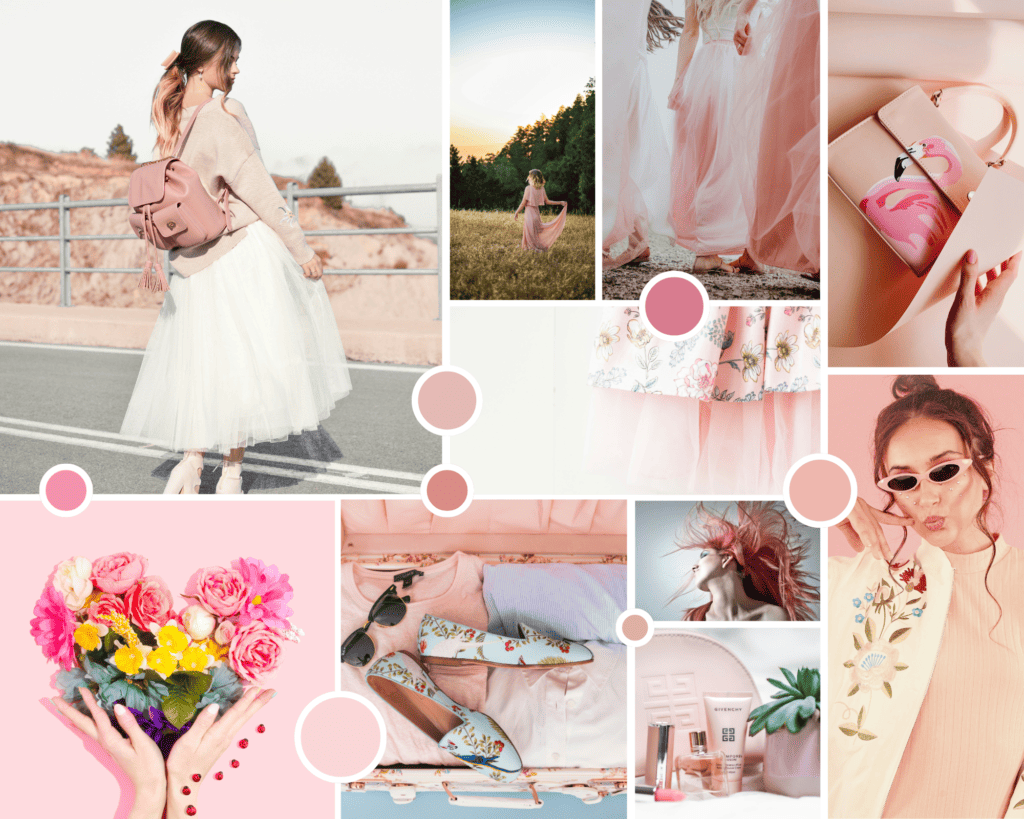
Gender Fluidity and Empowerment
Pink’s association with femininity has undergone a transformation in recent years. Many individuals and communities reclaiming the color as a symbol of empowerment and self-expression. The rise of gender-fluid fashion and beauty movements has challenged traditional gender norms. In turn, this has led to a more inclusive and diverse understanding of pink’s symbolism. In effect, pink is no longer confined to notions of femininity but is celebrated as a color that transcends gender and embraces individuality.
Activism and Awareness
Pink has also been used as a symbol of solidarity and activism, particularly in movements focused on women’s rights, LGBTQ+ rights, and breast cancer awareness. The pink ribbon, for example, has become a widely recognized symbol of breast cancer awareness and advocacy, serving as a reminder of the ongoing fight against the disease. Similarly, pink has been used in protests and marches as a visual representation of solidarity and support for marginalized communities.
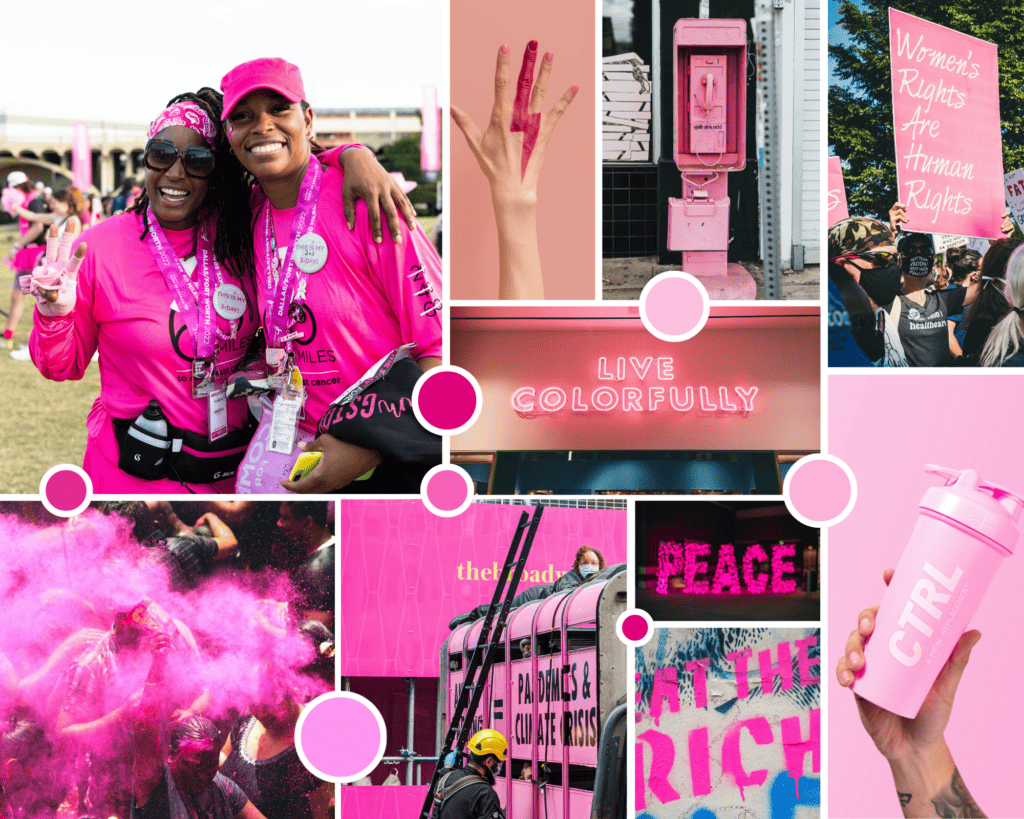
Cultural Icons and Influencers
Cultural icons and influencers continue to wield pink as a powerful tool for self-expression and influence. From musicians like Nicki Minaj, whose vibrant pink persona has become synonymous with empowerment and confidence, to fashion designers like Jeremy Scott, whose bold pink creations push the boundaries of creativity and individuality, pink remains a color that inspires and captivates audiences around the world.
From Runways to Room Décor
Pink’s influence extends far beyond its associations with femininity. It’s a color that transcends gender, cultural boundaries, and societal norms, making it a versatile and beloved hue across various domains.
In the realm of fashion, pink has long been a favorite among designers and stylists for its ability to evoke a range of emotions and moods. From soft pastel tones to bold neon shades, pink has graced the runways of haute couture houses and street-style scenes alike. It has been used to create whimsical, romantic looks as well as edgy, avant-garde statements. Pink garments have adorned icons of style and beauty, from Audrey Hepburn’s iconic pink Givenchy gown in “Breakfast at Tiffany’s” to Lady Gaga’s daring pink ensembles on stage.
Pink Color in Interior Design
Beyond fashion, pink is influential in the world of interior design. Pink has the power to transform a space, whether it’s through a subtle accent wall or a statement piece of furniture. For example, soft blush tones can create a serene and calming atmosphere in a bedroom. Comparatively, vibrant fuchsia accents can inject energy and personality into a living room or dining area. Pink’s versatility allows it to complement a wide range of styles, from modern and minimalist to bohemian and eclectic.
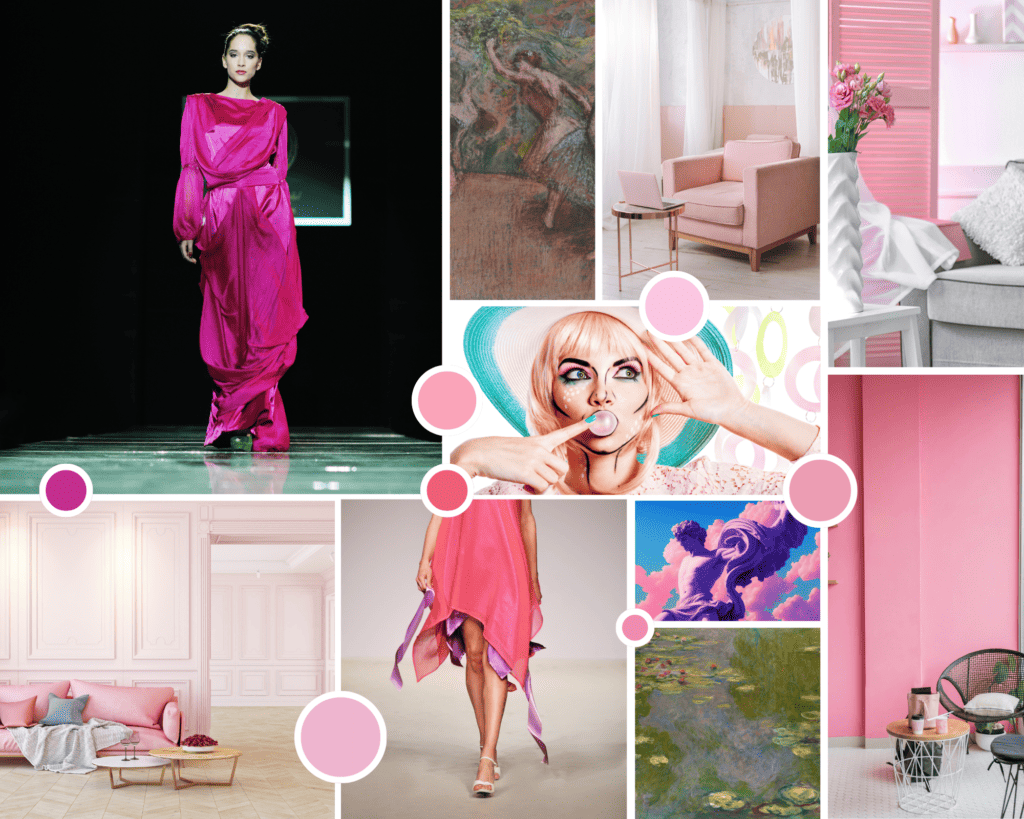
Pink conveyed emotion, symbolism, and meaning by artists throughout history. In the hands of the Impressionists, pink became a tool for capturing the fleeting beauty of nature, as seen in Claude Monet’s “Water Lilies” series. Looking forward to Pop Art, pink took on a bold and playful persona, as exemplified by Andy Warhol’s iconic Marilyn Monroe portraits. Contemporary artists continue to explore the possibilities of pink, using it to challenge conventions, spark dialogue, and provoke thought.
Pink’s influence also extends to branding and marketing, evoking feelings of femininity, romance, and luxury. From cosmetics and fashion brands to food and beverage companies, pink is a popular choice for logos, packaging, and advertising campaigns. Its association with sweetness and innocence makes it particularly well-suited for products aimed at children and young adults. Additionally, its sophistication and elegance appeal to a more mature audience.
Exploring Pink Color Palettes
When it comes to incorporating pink into your life, the possibilities are as vast as the spectrum of hues within the color itself. Whether you’re drawn to soft, romantic shades or prefer bold, statement-making tones, there’s a shade of pink to suit every style, mood, and occasion. Let’s explore some inspiring color palettes that showcase the versatility and beauty of pink:
Blushing Romance
Soft blush tones paired with complementary colors create a palette that exudes romance and elegance. Picture a bedroom adorned with blush pink walls, crisp white linens, and touches of shimmering gold accents. This palette evokes a sense of intimacy and warmth, perfect for creating a cozy and inviting space. For a touch of freshness, consider adding subtle pops of sage green or pale lavender.
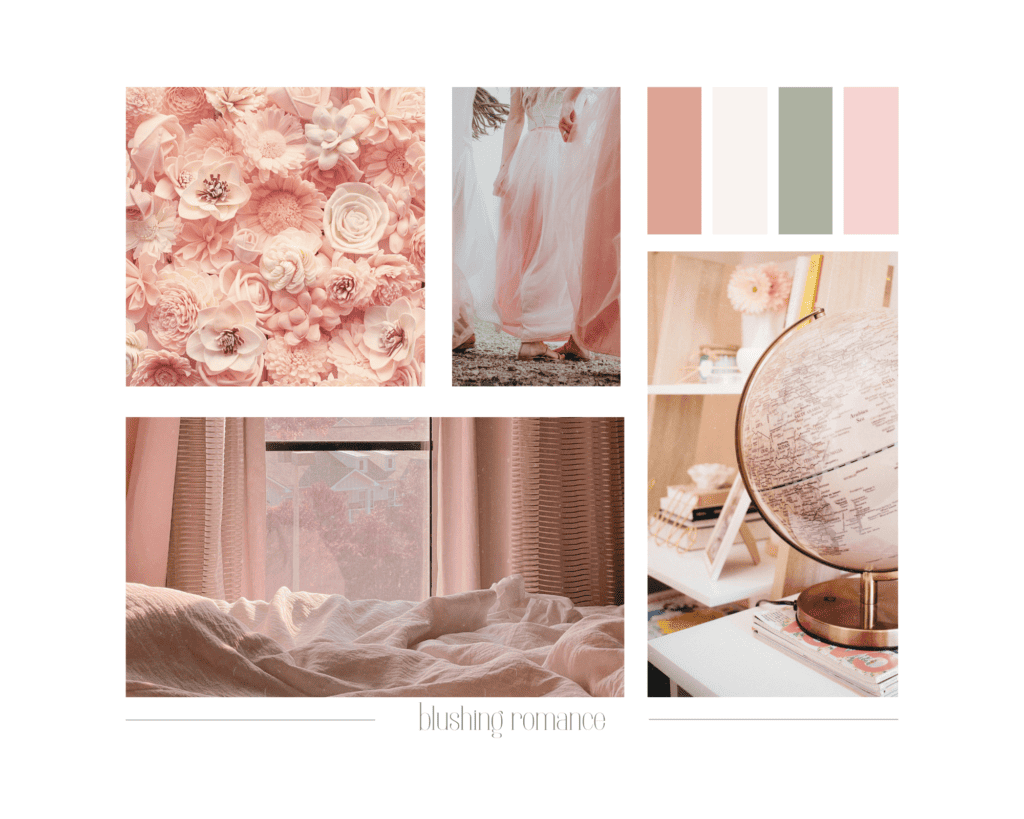
Bold and Vibrant
For those who prefer a more daring and adventurous approach to color, a palette of bold and vibrant pinks paired with rich jewel tones is sure to make a statement. Imagine a living room featuring a vibrant fuchsia sofa, accented with deep navy blue throw pillows and emerald green accent chairs. This palette is bold, sophisticated, and full of energy. It’s ideal for those who aren’t afraid to embrace color in their home decor.
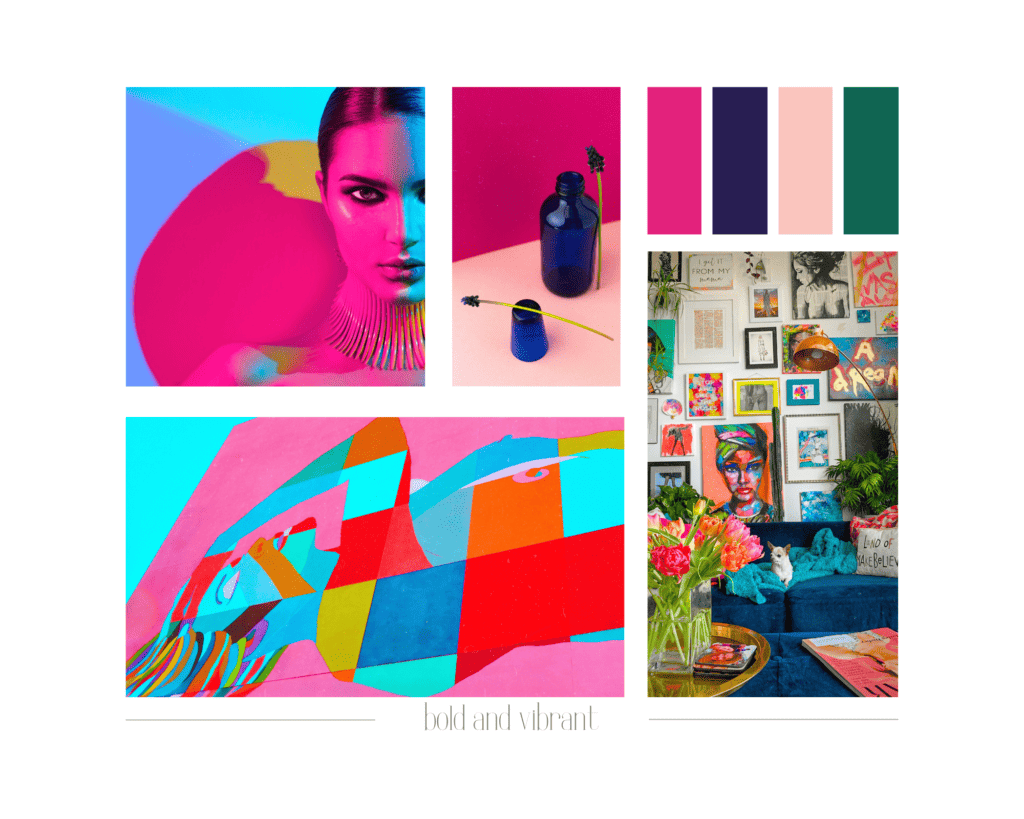
Minimalist Chic
Embrace the understated charm of millennial pink with a minimalist color palette that’s both modern and sophisticated. Pair soft blush tones with crisp whites, cool grays, and touches of metallic accents for a sleek and polished look. Think of a minimalist kitchen with blush pink cabinets, marble countertops, and brushed brass hardware. This palette is timeless, elegant, and effortlessly chic, making it perfect for those who appreciate clean lines and subtle sophistication.
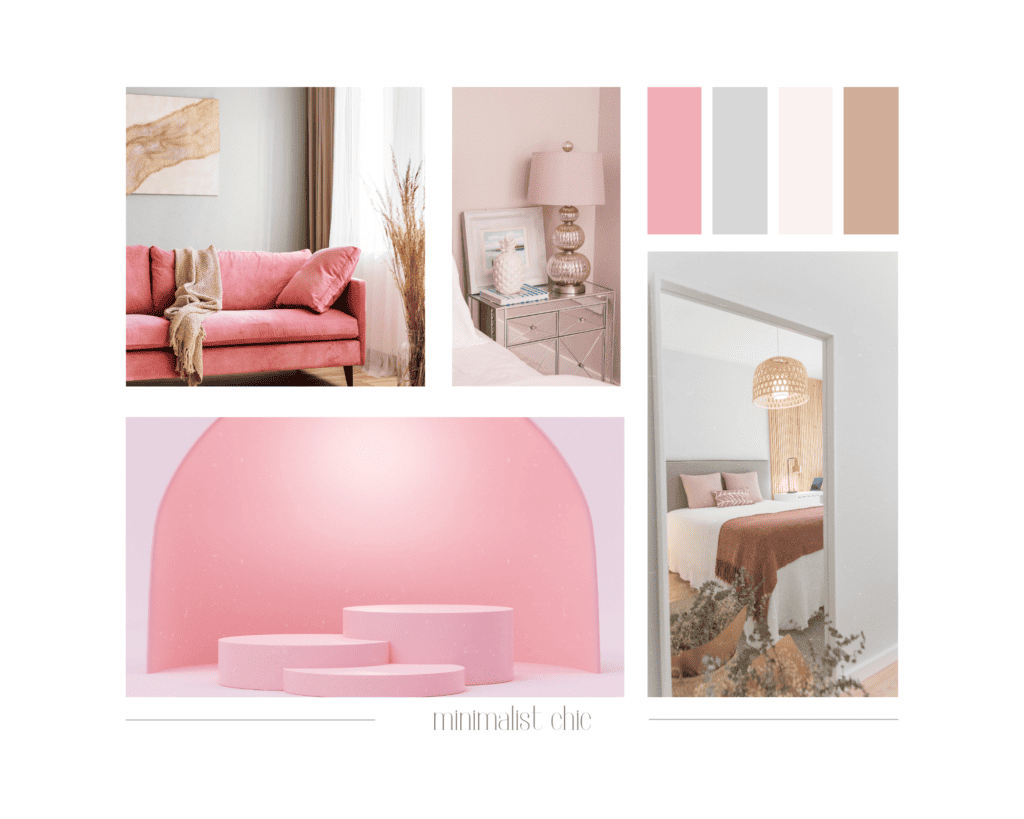
Playful Pastels
Soft pastel pinks paired with complementary pastel hues create a palette that’s whimsical, playful, and full of personality. For instance, picture a nursery decorated in shades of baby pink, soft lavender, and mint green, with plush toys and delicate textiles adding a touch of sweetness to the space. This palette is perfect for creating a serene and calming environment for little ones, while still infusing the room with plenty of charm and personality.
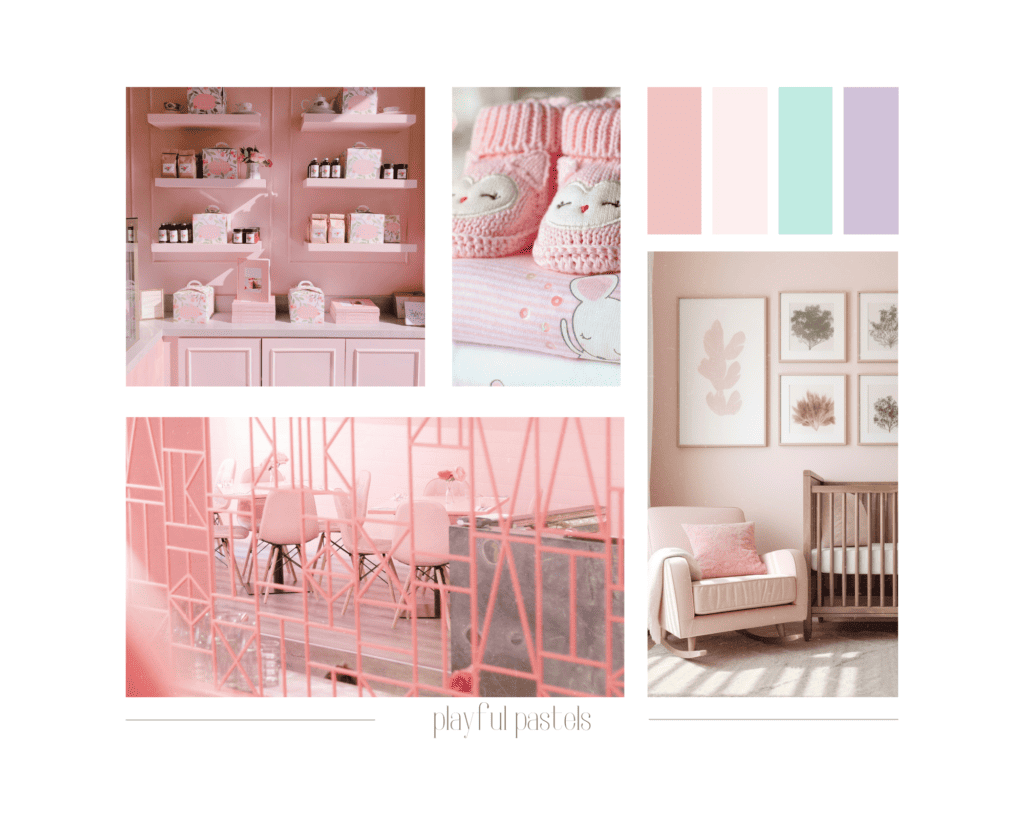
Earthy Elegance
For a more grounded and organic approach to pink, consider pairing blush tones with earthy neutrals such as taupe, beige, and warm browns. To illustrate, picture a cozy living room featuring a blush pink accent wall, paired with plush taupe sofas, rattan accents, and woven textiles. Without a doubt, this palette is warm, inviting, and full of natural beauty. Essentially, it’s perfect for creating a relaxed and welcoming space that’s perfect for cozying up with loved ones.
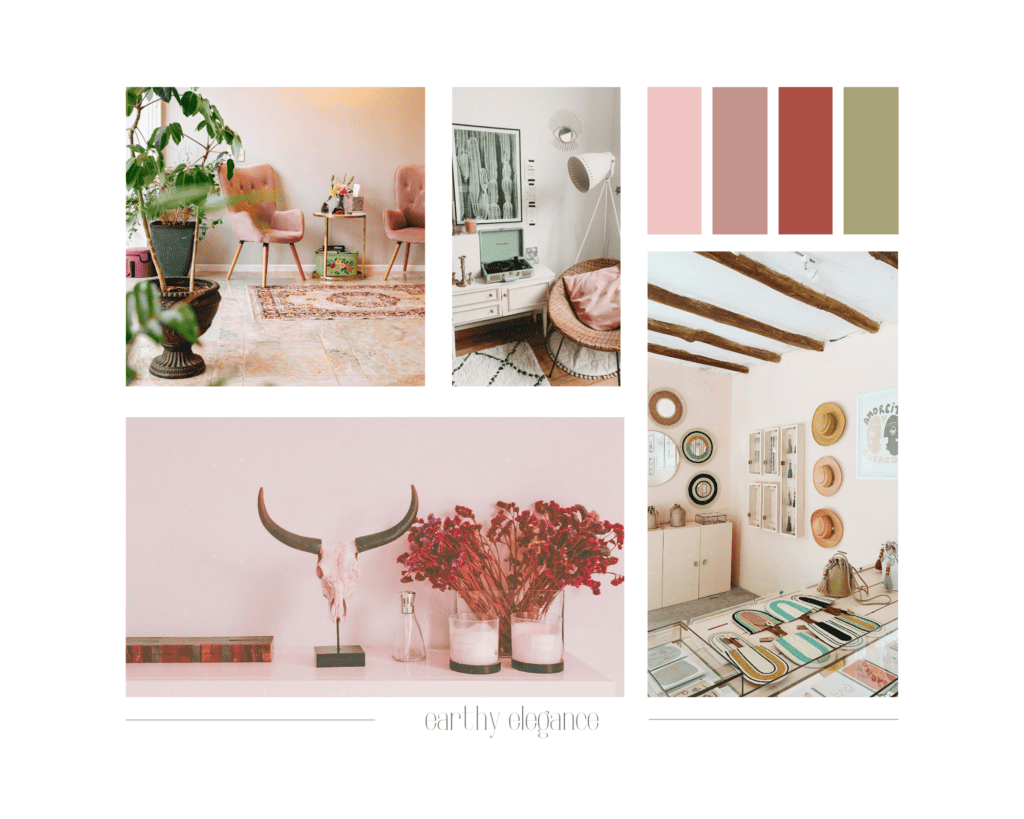
Conclusion
Pink’s influence in current culture extends far beyond its aesthetic appeal. It serves as a symbol of empowerment, inclusivity, and self-expression, reflecting the ever-evolving attitudes and values of contemporary society. Whether it’s through fashion and beauty trends, social media aesthetics, or activism and awareness efforts, pink continues to inspire and resonate with audiences across generations and cultures.

